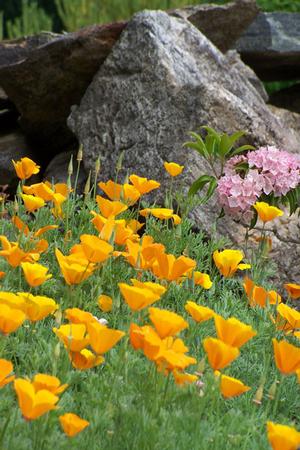Lawns Part VII: In Humus Veritas - In Soil There is Truth
“In soil there is truth.” Though it may sound pretentious, even absurd, hearken back to Part I of this series and recall that soils harbor burgeoning living tapestries composed of many creatures. In soil there is life! And though it has become fashionable to condemn the lawn, stretches of green grass rivers can be beautiful walkways demarcating garden. Open vistas a la the American prairie are certainly one element which represents an endemic American gardening trait. This tendency towards open gardening does differentiate us from the English style, a prevalent and in perhaps too many ways an overbearing influence in our ability to move towards and distinguish our own creative North American gardening styles. We, as a polyglot culture, with many distinct habitats and peoples reflected in this great country are only now at the threshold in artful development of North American garden styles. The American lawn can and perhaps should be considered as part of a larger landscape rather than merely summarily dismissed.
The styles may echo seas of open prairie, rocky gardens of the west, cool and shaded woodland ravines of the east, boulder-strewn and sun blazed cactus gardens of the bony desert (see pic 1), breezy seashore and dune gardens from all temperate coastal stretches or even mirror the Mediterranean conditions found in southern California (see pic 2). Stretches of lawn can be a part of the mix but only where appropriate. Remember this adage: right plant, right spot. For instance, lawns planted in the American southwest are water-wasteful and an anathema – not reflective of the broader realities of this arid region. Conversely, shaded areas under tree canopies in a woodland expanse will not support sun loving lawn grasses. Garden appropriately; reflect your local conditions choosing from a sensible palette.
I will never tell you that lawns are intrinsically “bad”. What can be considered unhealthy, injurious and ill-advised is the wanton repeated use and misuse of unnecessary chemicals. They will rain degradation down upon all manner of life with many negative consequences, some immediate and unseen, others possibly masked for years and even decades. That is the dark side of the American lawn as proffered by chemical manufacturers who have sold us down the proverbial poisoned river.
Before you incorporate a lawn do consider your needs and how much time you are willing to spend in its maintenance. Please avoid chemicals in its upkeep. And when you literally scratch the surface of the soil if transforming a plot, remember the trillions upon trillions of lives held within. Respect this fact and you respect life.
For those who already have established lawns consider shaving away some of the excess. Study the area. Look at the light levels, the slope of the land, how well it drains. Make changes. Reduce fossil fuel emissions. Think about it: you can save yourselves a lot of time tomorrow with a careful plan set to motion today.
A stretch of organic lawn can be an important multi-use outdoor room, a place to recreate; whether it is used to pass a football, bat a softball, serve up a tennis ball or whack a croquet ball. It can be a patch on which to safely roll, frolic, lounge, picnic, barbecue, or erect a tent to camp out overnight. It can be the carpet underlying a celebratory party or a support upon which to quietly rest. Also remember that huge, unnecessary swaths of lawn require large chunks of precious time to maintain which otherwise may be used towards self restoration in our endlessly noisy and busy lives. If you are a slave to the maintenance of unnecessary oceans of lawn you will have less time to enjoy the aforementioned recreational pastimes.
A hammock… hmmmm, it sounds great! But before you climb in get out those shovels, dig in and become a participant in the changing North American trend away from the chemical lawn. In humus veritas: in soil there is truth. The truth lies within each of us. Examine. Wouldn’t you rather listen to the beautiful calls of birds, supine in your gently swaying hammock than pushing a polluting engine with sweaty brow enduring its angry whine all the while?
After you have diminished unnecessary lawn and have made more free time for yourselves then swing in your hammock. Muse about all the good you have accomplished: more time for yourselves, the saving of untold numbers of tiny lives in the soil, cleaner aquifers, healthier children and pets and a vibrant green planet. Ponder the ferns, shrubs, trees and perennials that provide all manner of food, cover and nesting opportunities for our feathered and four-legged friends. Meditate upon all the flowering plants which provide nectar for the butterflies and the pollination possibilities for the bees (see pic 3). Swing gently. Relax. Gradually drift. Dream and do so in peace (see pic 4).
Penned by Wayne Paquette, Winter 2007


